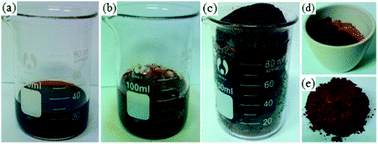Solution combustion synthesis of metal oxide nanomaterials for energy storage and conversion
Abstract
The design and synthesis of metal oxide nanomaterials is one of the key steps for achieving highly efficient energy conversion and storage on an industrial scale. Solution combustion synthesis (SCS) is a time- and energy-saving method as compared with other routes, especially for the preparation of complex oxides which can be easily adapted for scale-up applications. This review summarizes the synthesis of various metal oxide nanomaterials and their applications for energy conversion and storage, including lithium-ion batteries, supercapacitors, hydrogen and methane production, fuel cells and solar cells. In particular, some novel concepts such as reverse support combustion, self-combustion of ionic liquids, and creation of oxygen vacancies are presented. SCS has some unique advantages such as its capability for in situ doping of oxides and construction of heterojunctions. The well-developed porosity and large specific surface area caused by gas evolution during the combustion process endow the resulting materials with exceptional properties. The relationship between the structural properties of the metal oxides studied and their performance is discussed. Finally, the conclusions and perspectives are briefly presented.


 Please wait while we load your content...
Please wait while we load your content...